It is with much excitement that we introduce our Author of the Month for June, Richard Cassaro, and his fascinating new ebook, The Missing Link, in which he presents a crucial iconographic link in our search for an advanced, global mother culture in “prehistoric” antiquity.
A major discovery set forth in my new book, The Missing Link, has the potential to upend everything we learned in school about ancient civilizations and ancient religions.
During the course of my research and travels to visit the ruins and artifacts of Antiquity, I repeatedly found variations of the same mysterious “icon” worldwide. The “GodSelf Icon”—the term I use to express my discovery—is a prominent feature in most ancient cultures, as the collage below shows:
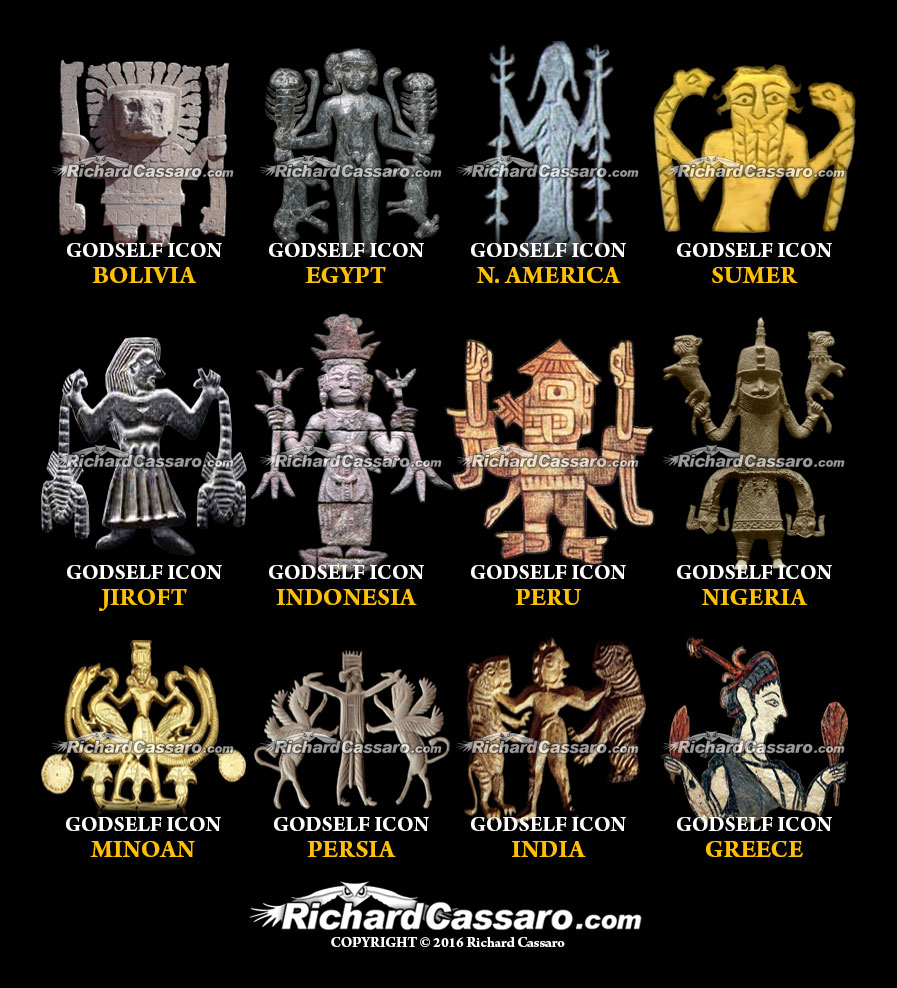
“GodSelf Icons,” a prominent feature of most ancient cultures, cast serious doubts about conventional theories of human spiritual evolution and the emergence of civilization.
I first set forth my initial discovery of the GodSelf Icon in my 2011 book, Written in Stone. Since then, I have found even more powerful reasons to focus attention on this remarkable pattern. My new e-book, The Missing Link: Powerful New Evidence of an Advanced “Golden Age” Mother Culture in Remote Prehistory, provides a more in-depth analysis of my GodSelf Icon discovery.
The GodSelf Icon is a depiction of a central figure, a forward-facing man or woman who holds in his/her hands outward from the body either a pair of animals or a pair of staffs symmetrically. These twin objects stand for opposing principles, and the central figure represents the hero or sage who combines those two opposing principles to create a spiritual balance that opens new doors of perception and creates centeredness of being.
Students of the occult will immediately recognize in this description the age-old coincidentia oppositorum (“coincidence of opposites”) concept. This is one of the central meanings of the GodSelf Icon, as we’ll see below.
The GodSelf Icon is a central feature of art and artifacts found in ancient Egypt, Assyria, Babylon, Peru, Mexico, Columbia, Costa Rica, Africa, China, Cambodia, Mesopotamia, India, Crete and many other places. In almost every one of these civilizations, the GodSelf Icon can be traced back to a very ancient and formative era. The further back in time we look, the more we see the GodSelf Icon.
A clear example of this is in Peru, where the Incas were merely the latest and final culture to use the GodSelf Icon. If we look to a much deeper antiquity, we see multiple versions of the GodSelf Icon, from one side of the country to the other:
All of the pre-Inca civilizations that once flourished in Peru not only used the GodSelf Icon, but regarded this symbol as the pinnacle of their culture. These cultures include the Chachapoyas, Chancay, Chavin, Chimu, Moche, Nazca, Paracas, Sican-Lambayeque, Tiahanaco (Bolivia) and the Wari. Scholars of the New World have noted the importance of this symbol and they call this symbol the “staff god.” We find the following explanation for the “staff god” in Wikipedia:
“The Staff God is a major deity in Andean cultures. Usually pictured holding a staff in each hand…his other characteristics are unknown, although he is often pictured with snakes in his headdress or clothes. The oldest known depiction of the Staff God was found on some broken gourd fragments in a burial site in the Pativilca River Valley…and carbon dated to 2250 BC. This makes it the oldest image of a god to be found in the Americas.”
—Wikipedia
This very same Icon, with the very same “pose”, was widespread among the Old World cultures of the Eastern Hemisphere. Scholars of the Old World call the GodSelf Icon “the Master of Animals.” Here is the Wikipedia entry for “Master of Animals”:
“The Master of (the) Animals or Lord of the Animals is a motif in ancient art showing a human between and grasping two confronted animals. It is very widespread in the art of the Ancient Near East and Egypt…They sometimes also have female equivalents, the so-called Mistress of the Animals…They may all have a Stone Age precursor…”
—Wikipedia
Here are several representations of the GodSelf Icon—called Master of Animals in the Old World—from the Old World civilization of Jiroft, which is dated to Persia (late 3rd millennium BC):
Despite recognizing the icon in their respective disciplines, scholars of Old World cultures and scholars of New World cultures have:
(a) failed to recognize the icon’s presence worldwide
(b) failed to understand the icon holds the same meaning worldwide
(c) failed to connect (a) and (b), and thus remain unaware that THE “GODSELF ICON” IS THE LOST SYMBOL OF AN ANCIENT UNIVERSAL RELIGION once known worldwide.
My book presents multiple comparative analyses of GodSelf Icons that stem from cultures that have long been considered alien from each other by heritage or through lack of trade possibilities.
Here is an example:
The similarity between the images above is truly striking. Not only is the overall shape a perfect match, but even the small details are a perfect match—the parallel hands, elbows, squat body, and elongated “staffs” in each hand symmetrically.
Here is a closer look:
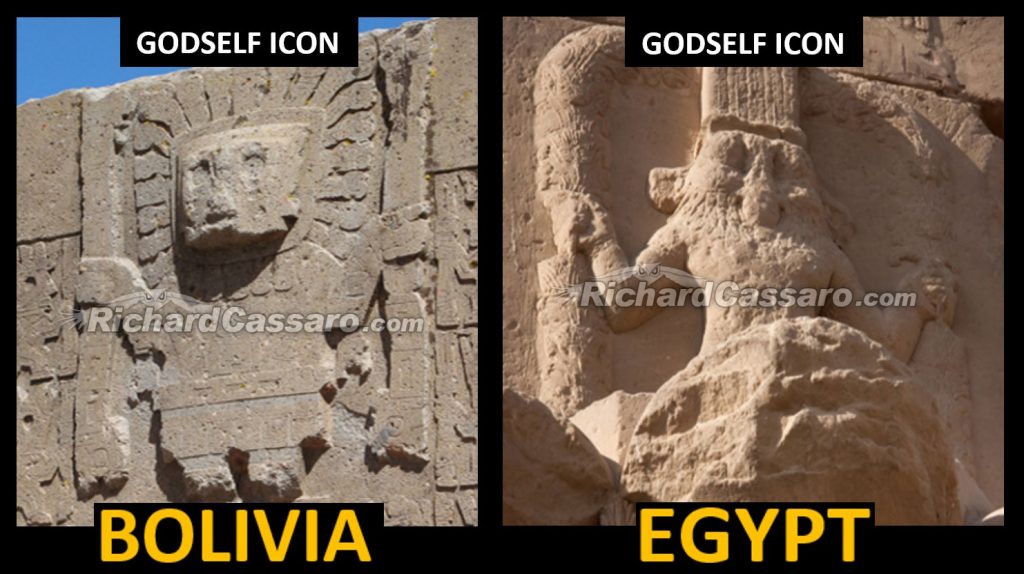
This rock-cut image of the Egyptian god Bes bears a strong resemblance to the stone engraving of Viracocha on the Gate of the Sun in Tiahuanaco, Bolivia.
Stylistic differences aside, the ancient Egyptian master masons (in North Africa) who created this GodSelf Icon, named Bes, and the ancient Tiahuanacan master masons (in South America) who created the GodSelf image in Bolivia, named Viracocha, seem to have been working off the same basic blueprint. Each would have recognized the other’s GodSelf icon as such.
The visual similarity of these GodSelf Icons is only the tip of the iceberg. Scholars tell us that the Egyptians and the ancient Andean cultures followed the same “balance-of-duality-to-find-the-center” religion—which is precisely the teaching conveyed by, and encoded in the pose of, the GodSelf Icon:
By extending both arms and hands outward from the body, the GodSelf Icon conveys the concept of duality—an idea expressed by the twin objects depicted “symmetrically” in each hand (twin serpents, twin staffs, twin animals, etc.). Standing between the representations of duality, the hero figure marks the “center” or “balance” point, thus giving us the central message of the GodSelf Icon—to find the center between the opposites.
The GodSelf Icon has been preserved through the ages in the occult tradition, which has also retained its “balance-of-duality-to-find-the-center” meaning. I found that there exists a modern “memory” of this ancient global icon, called the Rebis, which has been linked symbolically to Freemasonry:
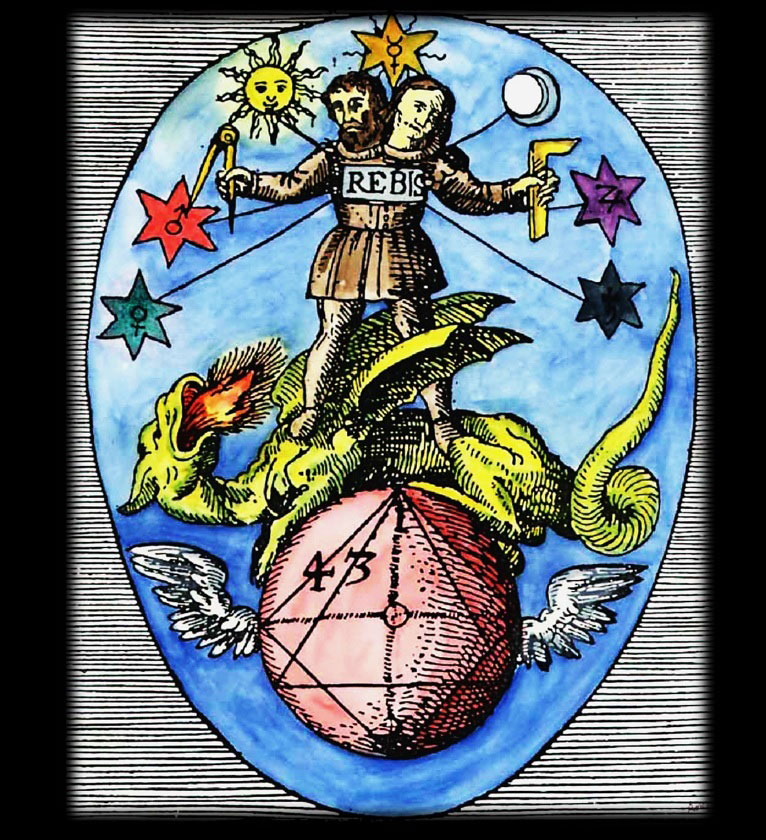
Rebis from Theoria Philosophiae Hermetica (1617) by Heinrich Nollius. Sun (and Masonic compass) in the right hand, Moon (and Masonic square) in the left hand. The icon has two heads. Male right, female left.
In an article subtitled Secrecy and Symbolic Power in American Freemasonry, which appeared in the Journal of Religion & Society (Volume 3, 2001), comparative religion scholar Hugh B. Urban of Ohio State University describes this figure:
“…the “Mystery of Balance” or coincidence of opposites…This is…the secret of universal equilibrium between good and evil, light and darkness…Male and female, sun and moon, light and dark—symbolized by the Masonic compass and square…all come from the same source…”
In my 2011 book, Written in Stone, I proposed an alternative history of religion, one that views ancient spirituality as a process of overcoming opposite forces within the physical (bodily) self to discover spiritual balance and inner strength. To support this idea, I pointed out how ancient cultures worldwide—and especially the pyramid cultures—all built “Triptych Temples” (a term I coined) to express this “balance-of-opposites-to-find-the-center” wisdom:
The true secret about God is that there never was an outward God in the biblical sense. The only god is you, the inner you (your spiritual “soul”) as opposed to the outer physical you (your material “body”); but you have amnesia of who you really are. Noted American Theosophist Alvin Boyd Kuhn once wrote, “Man is a god in the body of an animal according to the pronouncement of ancient philosophy…” The truth of that statement was known in ancient times and has been preserved up to the present, in defiance of religious orthodoxy and superstition, in large measure thanks to the careful safeguarding of ancient spiritual truths by Freemasons and other members of Secret Societies, which conveyed this idea using the same GodSelf Icons.
The following GodSelf Icons from modern esoteric manuscripts share the same posture. In each case the centered deity, mimicking the pose of the Rebis above, holds a solar staff in his/her right hand and a lunar staff in his/her left hand:
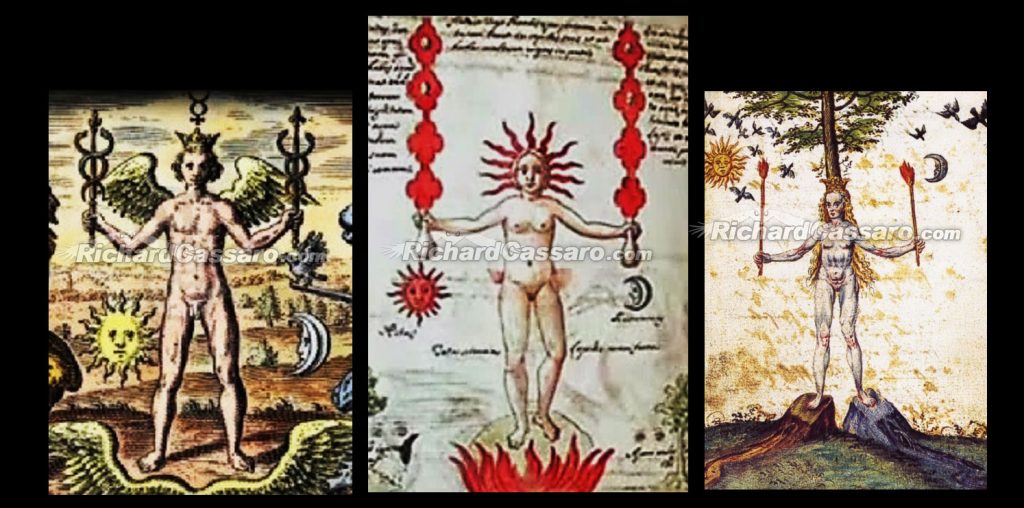
Left: The alchemical Mercury, from Tripus aureus (The Golden Tripod) by Michael Maier, c. 1618. Middle: From a mysterious alchemical treatise titled “The Hermetic and Alchemical Figures of Claudius de Dominico Celentano Vallis Novi From A Manuscript Written And Illuminated At Naples A.D. 1606” Right: From a 16th-century alchemical treatise called “The Rosary of the Philosophers.”
Discovering the Rebis was an important moment for me because it was clear that the Rebis is a modern version of the ancient GodSelf Icon motif. I began learning about the Rebis´ significance in esoteric manuscripts, which described the sun and moon in the Rebis´ hands as emblems signifying duality. When I applied this key to ancient cultures, their GodSelf Icons began to come to life.
The similarity of their GodSelf Icons makes it appear that ancient cultures across different continents were somehow related, even though these areas are geographically distant, so distant that any direct relationship seems impossible. Scholars who study these areas believe that these civilizations developed independently, but side-by-side comparison of artefacts and monuments from cultural centers throughout the world seem to support the idea that we are looking at two peas from the same pod. I believe that the existence of pyramids, corbeled vault architecture and mummification on different continents is beyond coincidence:
In Written in Stone, I presented evidence supporting the idea that an earlier “Golden Age” mother culture now lost to time—Graham Hancock’s “lost civilization”—may have been the common thread that united these cultures.
The story of an advanced “Mother Culture” in remote prehistory was first set forth by the Greek Philosopher Plato, who called it “Atlantis.” According to Plato’s account, the peoples of this Mother Civilization were not technologically advanced but spiritually advanced. As Plato explains, the Atlanteans grew weak due to their materializing tendencies, weak enough that they began to lose touch with the inner divinity that granted them their power:
“For many generations…they obeyed the laws and loved the divine to which they were akin. …they reckoned that qualities of character were far more important than their present prosperity. So they bore the burden of their wealth and possessions lightly, and did not let their high standard of living intoxicate them or make them lose their self-control… But when the divine element in them became weakened…and their human traits became predominant, they ceased to be able to carry their prosperity with moderation.”
—Plato, Timaeus
As Plato saw it, the Atlanteans were sophisticated because of their identification with their own “divine” nature, rather than their “human” traits.
In The Missing Link, I put forth the idea that the GodSelf Icon is a memory of this divine nature in man—a way to remember the divinity within the body.
In ancient Greece, the story of Demeter and Persephone, one of the foundational myths of Greece, is closely related to this idea. The Greek gods descended in large part from Demeter, goddess of the harvest, who preceded most of the Olympians, and whose oldest images are represented by GodSelf icons.
Demeter’s young daughter Persphone strayed one day from her home in Arcadia (heaven) while picking flowers in the green fields. Suddenly, Persephone “fell” into the Underworld; Hades below had made the ground open to swallow her. Overcome with sorrow, Demeter searched for her daughter ceaselessly, preoccupied with her loss and her grief. The seasons halted; living things ceased their growth, then began to die. A desperate Demeter pleaded with the Supreme God, Zeus, to free her. Zeus concluded that if Persephone had not eaten of the fruit of the lower world, she could return to Arcadia. But if she had, she would have to live a part of each year in the Underworld with Hades. Persephone had indeed eaten a pomegranate while in the Underworld, condemning her to return below for a fraction of each year. Persephone’s time spent in the underworld is thus linked to Fall and Winter, and her return to the upper world with Spring and Summer.
To interpret this myth correctly, it’s necessary first and foremost to understand that the myth does not describe anyone or anything external to you. The myth is all about you. It simultaneously describes the dichotomy of your immortal spiritual condition and your mortal human condition. Demeter symbolizes your soul (the divine element in you, as Plato would say) while Persephone symbolizes your body (the human trait, according to Plato). Demeter, your soul, is eternal, powerful, wise and divine. Persephone, your body (who is the offspring or “child” of Demeter just as much as your body is the offspring or “child” of your soul), is naïve, unwise, playful and blissfully ignorant; as such, Persephone is subjected to, and indeed becomes a victim of, the pull and passions of material earthly existence.
As evidence of this Demeter/Soul vs. Persephone/Body interpretation, the myth clearly compares and contrasts the higher world of heaven where Demeter resides with the “underworld” or lower world of earth, where Persephone eventually resides.
The myth teaches that we’ve fallen from Heaven down to the Underworld (earth), just like Persephone. We have eaten – and we continue to eat – the fruit of this lower world, with its myriad seeds. When we die, we leave this place and ascend back to the source. But, having eaten of the fruit, the soul will necessarily gravitate back down again because, in the words of Socrates, “it is always full of body when it departs, so that it soon falls back into another body and grows with it as if it had been sewn into it.” This is the cycle of reincarnation, a central teaching of the Mysteries. It is an almost endless cycle that will continue until, after learning “the lessons of material/earthly life” we cease to identify with the material bodies we acquire during incarnation and begin to find our true inner Self – the soul.
According to Plato, Socrates said that the key “lesson of material/earthly life” is to recognize that earthly existence is made up of “pairs of opposites,” which imprison the soul in the body by preventing it from knowing itself. To elucidate this idea, Socrates uses a certain “pair” of opposites, namely, “pleasure” and “pain”:
“…every pleasure and every pain provides, as it were, another nail to rivet the soul to the body and to weld them together. It makes the soul corporeal, so that it believes that truth is what the body says it is. As it shares the beliefs and delights of the body, I think it inevitably comes to share its ways and manner of life and is unable to reach…a pure state; it is always full of body when it departs, so that it soon falls back to another body and grows with it as if it had been sewn into it. Because of this, it can have no part in the company of the divine, the pure and uniform.”
There is a parallel to this in the ancient Zoroastrian religion, founded by the prophet Zarathustra (Zoroaster), which sees the world as an arena for the struggle of the two fundamentals of being, Light/Good and Darkness/Evil, represented in two antagonistic divine figures: Ahura Mazda on the side of good against Ahriman on the side of evil.
“… the phenomenal world exists of a pair of conflicting opposites: light/dark, truth/falsehood, health/sickness, rain/drought…life/death, heaven/hell.
—Karigoudar Ishwaran, Ascetic Culture: Renunciation and Worldly Engagementedited
This duality was personified in the primeval “Creator” deity of the Persian religion, an “androgynous” figure named “Zurvan,” depicted in the center below:
The so-called “god of time and eternity,” Zurvan, is described by scholars as the “neutral father” of the “good” god Ahura Mazda and the “evil” god Ahriman. These twins are born and emanate from either side of him, as shown in this image from an ancient silver plaque. With his children representing the two opposites, Zurvan is “centered” between them, facing forward.
Zurvan’s neutrality between opposites is personified here by his striking the GodSelf pose. He appears to share an arm with both Ahura Mazda (good) and Ahriman (evil), and he is said to be passing along one flame in his “good” hand and one in his “evil” hand.
But Zurvan is neither good nor evil; he is the eternal being between these two temporal opposites. He is neutral. Zurvan is for this reason referred to as the god of light and darkness, good and evil, right and wrong, and so on. In fact, those aren’t his arms, though they appear to be. They are the arms of his two lower halves—his left and right sides, good (Ahura Mazda) and evil (Ahriman), that appear to be emanating from him, like the twin male and female faces that emanate from the Buddha.
Zoroastrianism emphasizes high moral standards, with salvation achieved by he who strikes the balance and realizes that he is neither good nor evil; rather, he is the eternal being temporarily experiencing these terrestrial apparitions here in the material realm. Ahura Mazda is not a personal god like the God of the Bible, but more of a template that encodes wisdom pertaining to the physical and spiritual constitutions of every man and woman. Zurvan is also a model that the masses should strive to follow. Worship is centered on this idea, not on a personal relationship with God.
The GodSelf icon was an important part of the vocabulary of religious and political expression in ancient times. Artists who depicted Alexander used the GodSelf Icon pose, perhaps as a message for posterity, telling us exactly how he became so powerful:
Religion for the ancients was not a homogenizing force as it is for most believers today. Your purpose as a spiritual being is not to obey the dictates of an age-old set of rules, nor to pray in prescribed sentences at certain times of the day, nor to sit with a massive group of other like-minded people nodding heads at the time-worn platitudes of a priest. Instead, the GodSelf Icon calls upon us to develop our talents to the fullest, to meditate about and act upon our individual purposes (our Will), and to become the greatest exemplars of our highest purposes. We are not sheep to be herded by priests; rather, we are independent self-sufficient spiritual beings who have a purpose that transcends our bodily functions and social needs.
The Missing Link builds on the case I made in Written in Stone, to show that one of the most important symbols in human history has been overlooked and misunderstood. What’s more, that symbol, properly appreciated, is as powerful for people today as it was for our Stone Age ancestors. In fact, one of the spurs to my interest in ancient civilizations was my chance acquaintance with the Freemason movement. Freemasons consciously imitated past symbols in a way that stressed spiritual concepts. I feel immensely grateful that they did so in a manner that preserved something of the past that would otherwise have been completely forgotten.







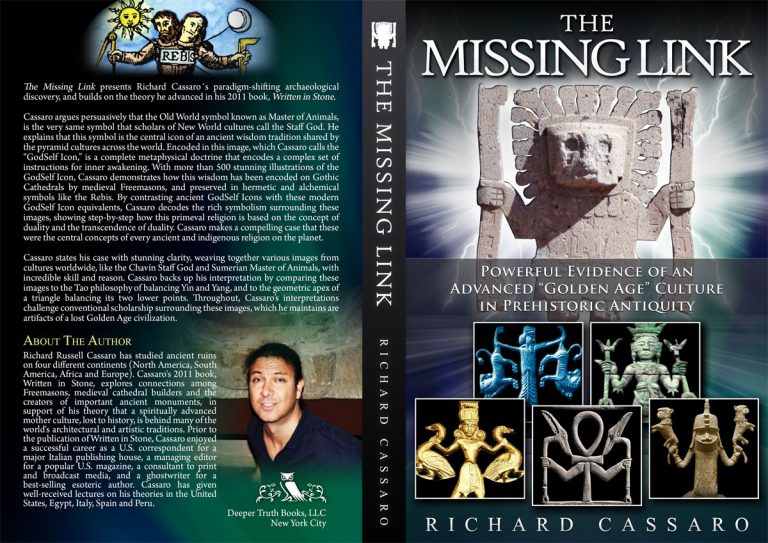
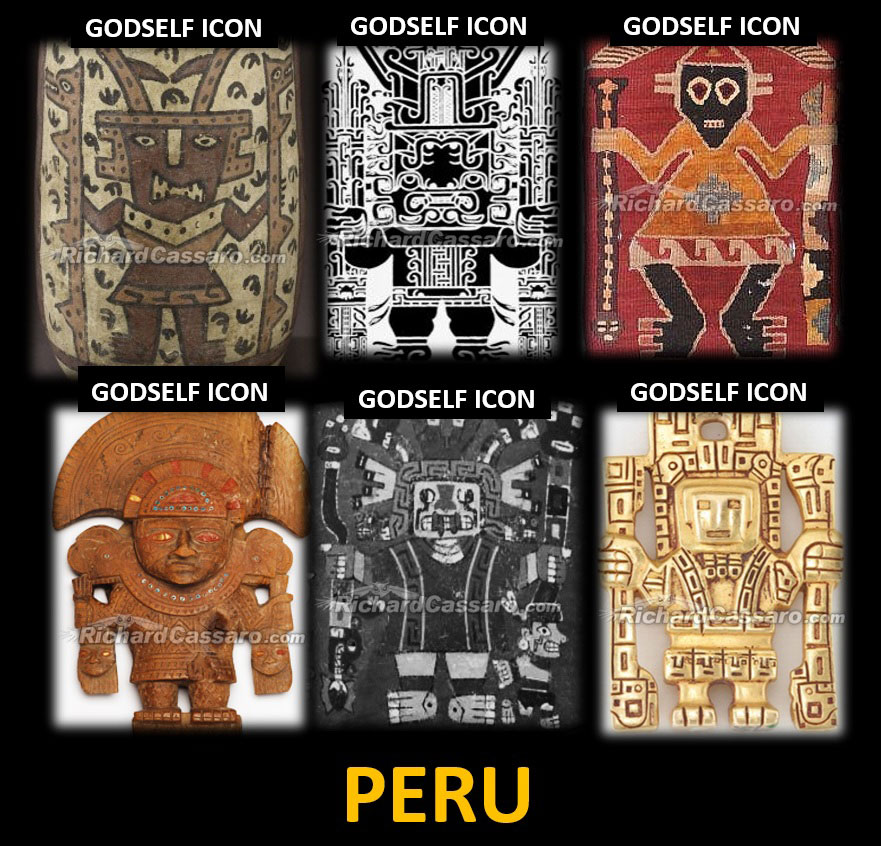
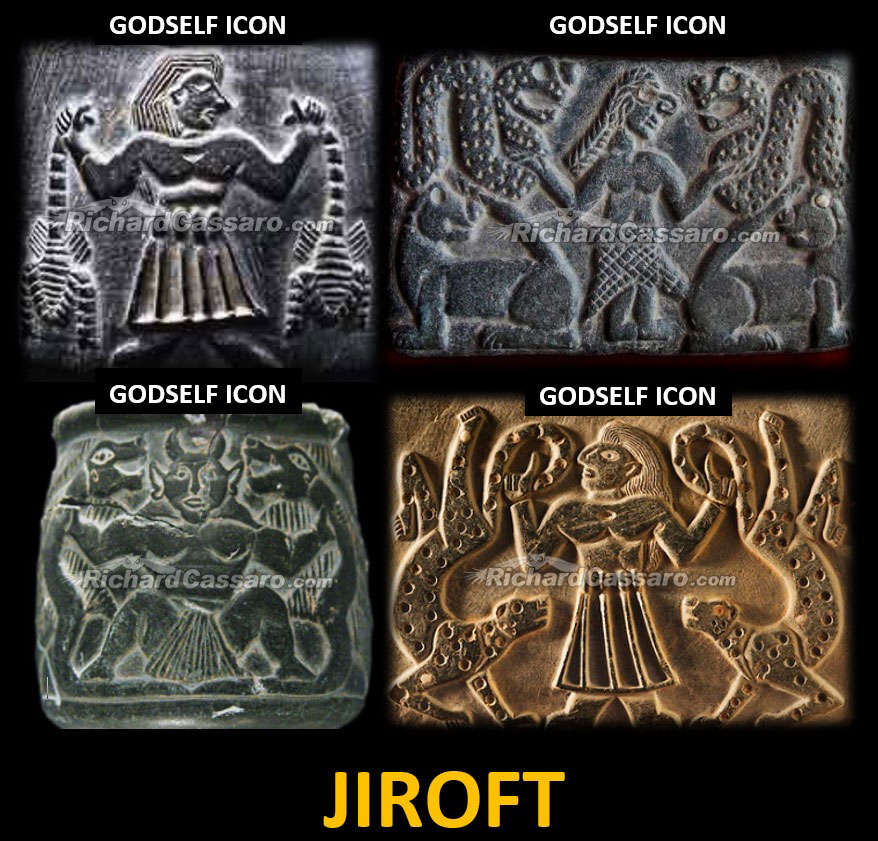

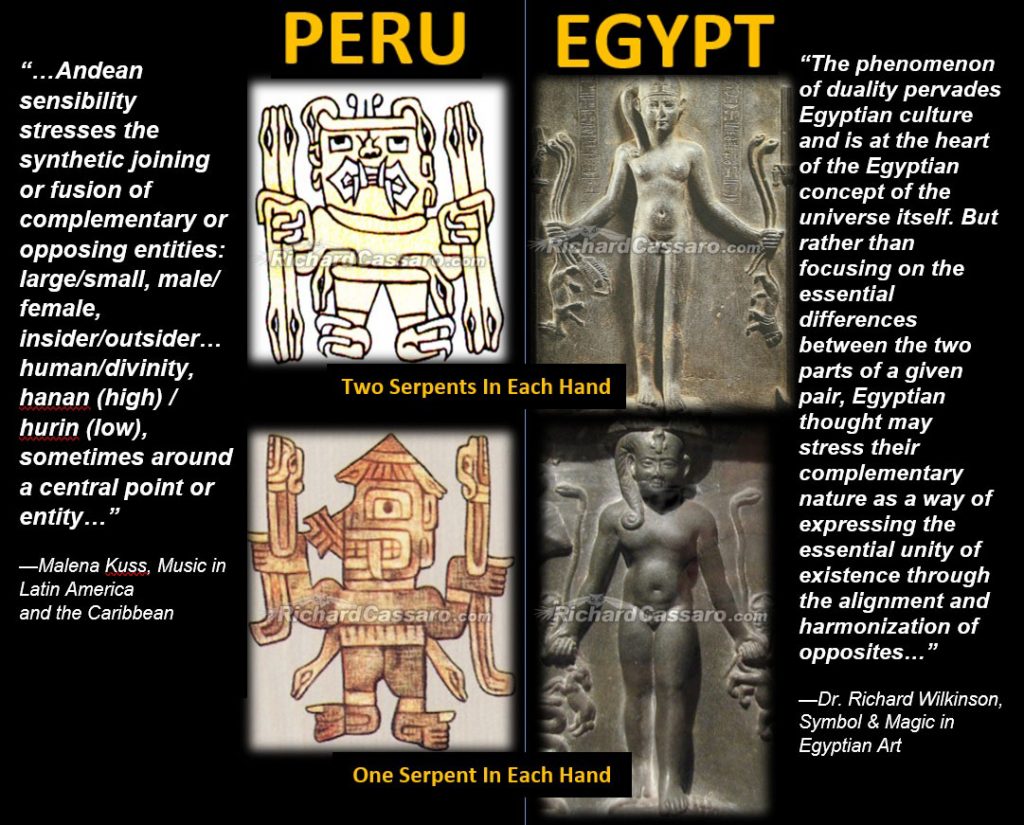
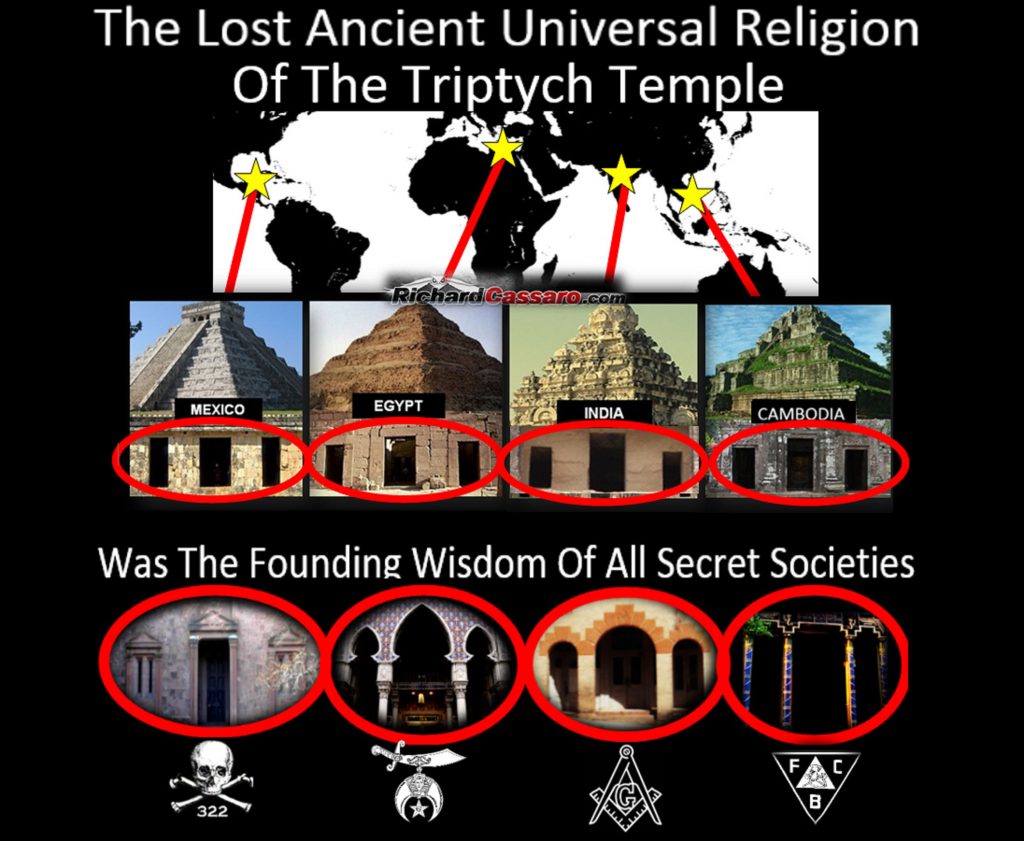
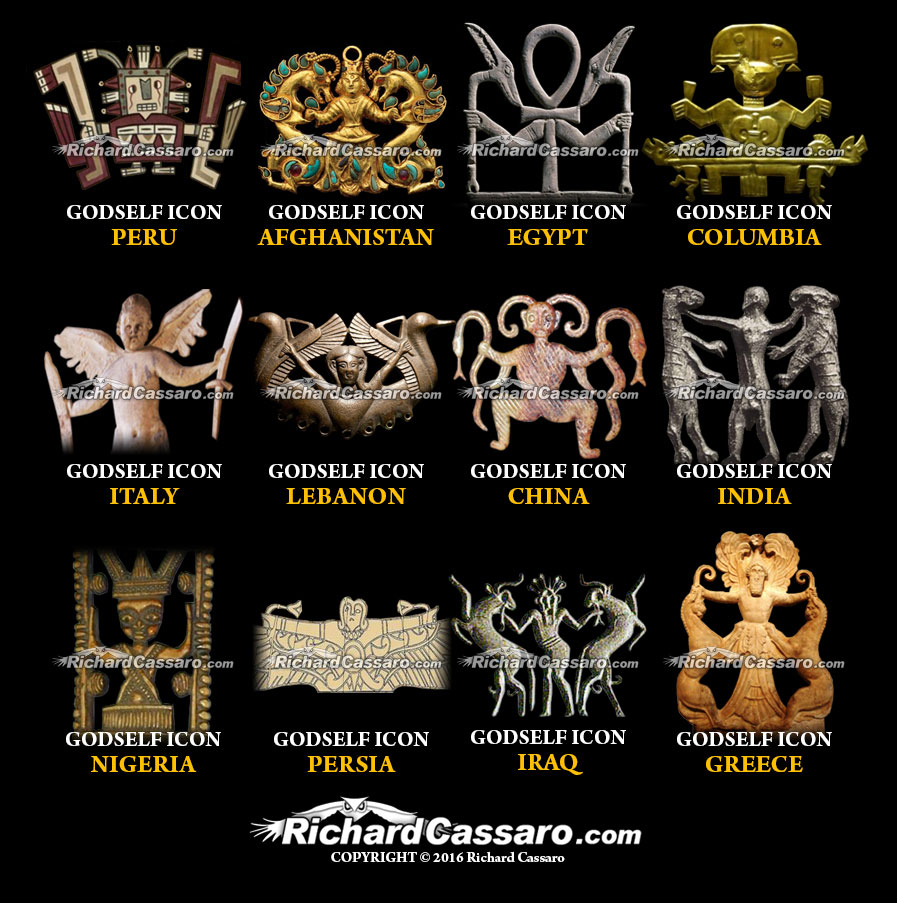
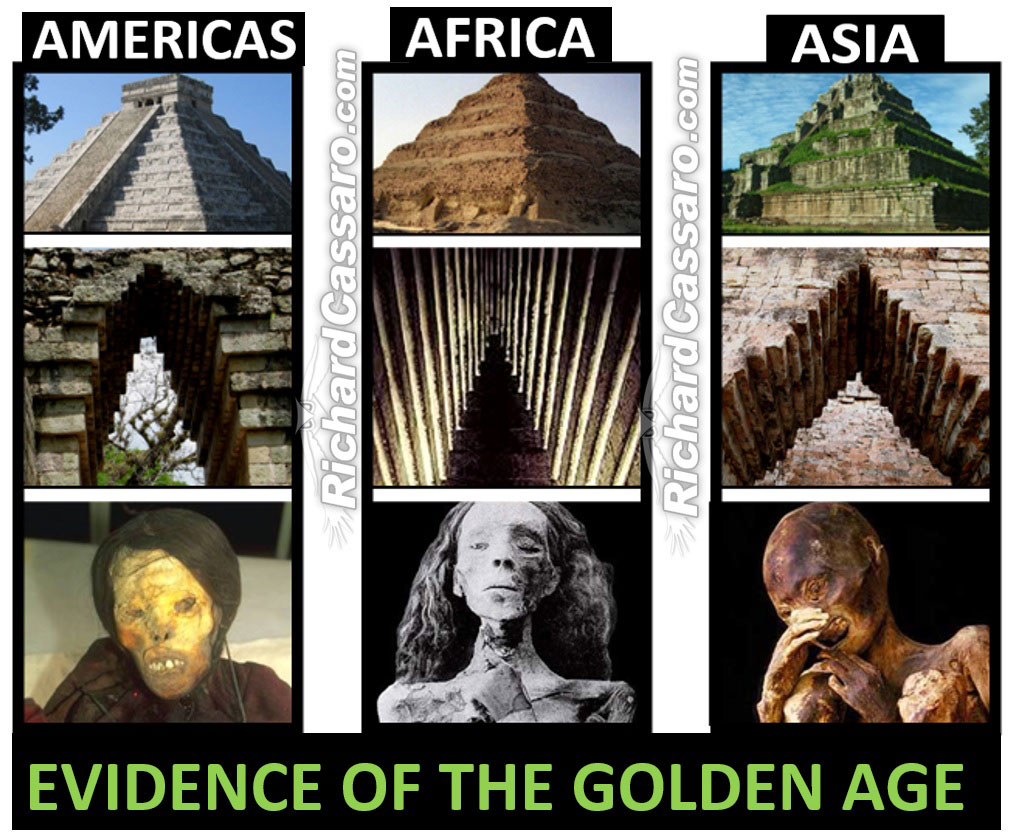

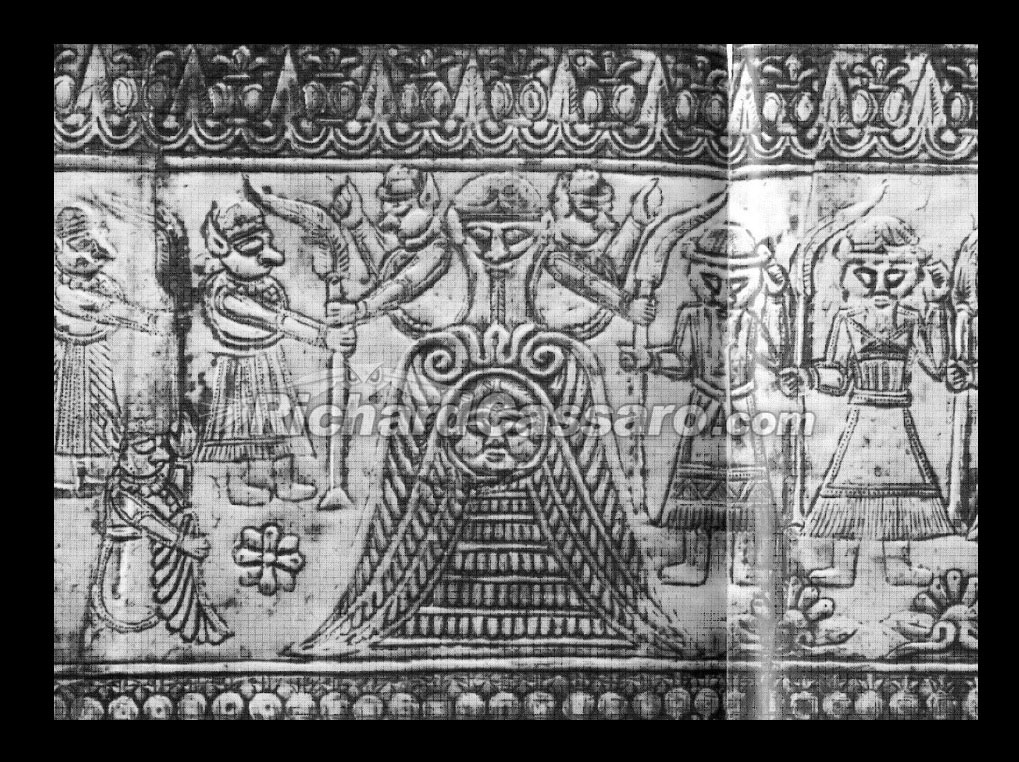
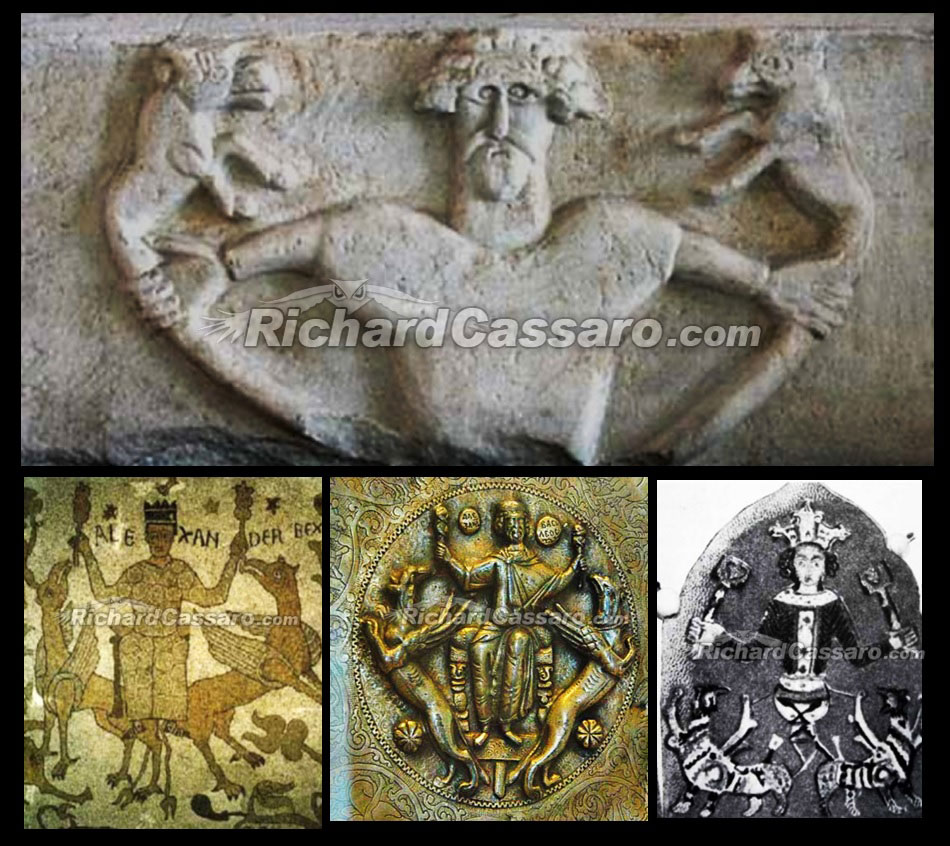
As usual you people talk about extinct civilization. But not about living civilization like India. Which had produced or producing many spiritual beings till now. You Western people seem to be blind to understand that India is the mother civilization which is older than any existing civilization
You are right, Tulasi Dass: the West seems oblivious to the incredible contributions of India. We’ve been so “stuck” in the Abrahamic traditions that we ARE blind to all others! But don’t despair: that is changing and we are, at long last, beginning to catch the first glimpses of a much larger view — thanks to the wide dissemination of information by (ta-dah!) The Internet, and the diligence of scholars and researchers like Richard Cassaro and Graham Hancock.
I completely agree, Bethany, when you say: “We’ve been so “stuck” in the Abrahamic traditions that we ARE blind to all others! But don’t despair: that is changing…” In my previous book, Written In Stone, I discuss this point precisely. I also explain and show the difference between the Western monotheistic religions that see a single God up above us (Judaism, Christianity, Islam) and the Eastern traditions that see divinity as something within us, rather than above us (Hinduism, Buddhism, Taoism). Thanks also for your kind words about my research. I appreciate it very much.
I´m afraid you´ve made a blanket statement that assumes (ass-u-me) that I´m not familiar with basic information about the history of India. In my first book, Written In Stone, I covered the idea that India may have been a Mother Civilization to Europe´s cultures. For instance, I spent many pages of Chapter One explaining how Sanskrit is linguistically said to be the Mother Tongue of European languages. I also explained the controversial “Aryan Invasion of India” theory, and I even offered an alternative explanation to it. In Written In Stone, I spent an entire chapter covering Hindu philosophy, and I explained how various advanced Hindu religious and philosophical concepts like Karma, Third Eye, Atman, Brahman, Reincarnation, etc., are very directly connected to the esoteric doctrine that we in the West call the “occult doctrine” and “Secret Doctrine.” To make your point, I believe India was the location of an advanced ancient civilization. However, the same High Wisdom that makes Indian culture so magnificent was also present in Peru, Mexico, Egypt, China and other places in the world at about the same ancient time. What´s abundantly clear, though, is that India has preserved a memory of this High Wisdom better than anyone anywhere else. As you say, it´s “still living” in India, whereas in other places (like Peru and Mexico) it´s become a dead religion (thanks mostly to barbarians like the Conquistadors).
Totally agree! I am Maya descent and this philosophy is hidden in the many codices existing in the south east of Mexico. The same icons are located around the world alone with different artistic expressions.
The concept of reincarnation is already very well detailed in Indian religions and the animal to God also been described in detail in Indian religions like the story of Hanuman where he progress’s to become a god from a monkey. if you had the knowledge you would know it. This nothing new which you Western scholars are blinded to see.
Tulasi Dass,
As we continue to look further into the past of our ancestors we will see that did not originate in India as you presume, everyday we find new and unknown links that go further back in time and will continue to see that civilization began in Africa and the Middle East rather than the claims of “local scholars” who want to base it in their own region for some reason. Also where in the above article does he say anything about the origins of mankind. Reincarnation is not just an Hindu idea or virtue it is a worldwide concept from many of the ancient and current religions and ethnic beliefs. Seems you are far removed from your so called western scholars and their narrow beliefs.
I agree with everything you said, S. Kaiser, thank you. My goal is not to minimize the role of any one culture´s contributions to the history of civilization, but, rather, to show that in ancient times our ancestors from around the world all shared the same Wisdom Tradition or Universal Religion or Perennial Philosophy or whatever one wants to call it. The reason I want to show this is because I feel this wisdom tradition is just as important to “us” human beings today as it was to our ancient ancestors way back when. Thanks for your great words.
The Now seems to be pointing to a new consciousness; everywhere I turn we are discovering the clouds of lies from recent history being blown away by the courageous and the curious, be it ancient history, archaeology and the more corruptible: the medical industry, the food industry, the oil industry, the space industry….
The New Age of Enlightenment?
I agree, Kirstin. There seems to be an awakening occurring. Thanks to the Internet, many people are starting to recognize the control systems that have been put in place. I´m hopeful that the next step is going to be open rebellion against those control systems, as more and more people awaken.
Richard is a Genius to say the least. It would take a moronic idiot not to understand this great researchers findings. I read his book written in stone a few years back. It was a great awakening for me. Great Work Richard! Can’t wait to download the new E book!
Thanks so much for your kind words, Bob. I´m thrilled to know that my research touched you. I appreciate your support, and I hope my work continues to have an impact. Many, many thanks.
Halo Richard!
In the alchemical union of opposites within the 7 chakra system we are governed by the
7 celestial bodies ( starting from the bottom left looking at the image ):
Venus, Mars, Sun, Mercury, Moon, Jupiter, Saturn.
The androgynous character is standing on the red root chakra governed by Saturn,
the 7th seal. The 4-3 numbers are 3D structure references to the tetrahedron and the cube.
3 is stylized in reference to the 3-7 hypersphere, a 4D sphere or torus.
All the stars in the REBIS image are 6 sided as in the FEMI-nine, right brained numbers system
which today is referred to as VBM or Vortex Based Math the paring of single digit numbers goes like this:
1:7 2:5 3:8 and 4:9 6 is an inverse of itself as in the astrological sign for today June 9th
Gemini the twins, in the 6th month.
6 is 1/2 the number of sides in the most fractal of all Platonic Solids the dodecahedron.
There are 12 outer circles in the Flower of Life for this reason. Jain reveals all about the
Phi Code hidden in our 24 hour day, flat circle of time.
Please keep up the awesome work you are doing Richard! Thank You!
Thanks very much for your kind words, Darren, and thanks for this in-depth explanation and interpretation of the symbols surrounding the Rebis. You touched on some great details. Note also the dragon on which the Rebis stands. Compare with the Cippus of Horus depictions, which show Horus standing on twin crocodiles: https://en.wikipedia.org/wiki/Metternich_Stela#/media/File:MetternichStela.jpg Interesting parallel, eh? Many thanks!
Richard, just a further comment about the large blue egg the individual is drawn within.
Richard Hoaglund reveals a lot about the tetrahedral hyperdimensional geometry of the “Tholus” here:
http://www.maxtheknife.com/truth&light2/truth&light2.htm
Eggs emerge from creatures with the large end first so the character in the REBIS drawing is ascending.
The Tholus shape is close to an almond which is also the form of our limbic brain’s amygdala
which are used to create our projected reality in conjunction with the pineal.
Amydalae are the ignition “points” which can be aimed to flash and activate our frontal
‘bird’ brain lobes or backward to our reptilian brain stem. Neil Slade is all over our great brain adventure and clicking our amygdalae forward. Why is this so critical?
Please take a minute and watch the short video filmed at this right brain school for children:
http://www.icuacademy.co.uk/
Interesting, Darren, but I couldn´t find a video at this link: http://www.icuacademy.co.uk/
After reading the article and then the comments I am as usual struck by the fact that humans have a seemingly overwhelming need to be right. Does it really matter where it all began? Does it really matter whether the country you call home in this lifetime is the holiest or most ancient or most anything?
After all the divisions of religion, race, sex, colour, caste, political persuasion – on and on they go, we are first and foremost members of the human race, the human family. All the other labels are self-derived and only serve to stop us from uniting and finding our personal power and peace on earth.
Thanks, Linden. I agree with everything you say. But I´m not sure how it pertains to my article or my work in general. The GodSelf Icon discovery is evidence of a universal religion in the ancient past. I believe there may have been a more ancient source for this universal religion, and I´m investigating it. Not sure how this is dividing us. In fact, just the opposite; it´s uniting us by showing that our ancient ancestors all followed the same Path.
Richard, thank you for considering the evidence I had pointed you to some time ago. It’s good to see that you have seen the evidence and how it adds up to debunk the Aryan Invasion Theory (AIT). This whole thing was worldwide at one point. I know it sounds 1980s “I was alive thousands of years ago,” but I think there is something when I read the name Jiroft (A name that might have been something entirely different) and hear/see a very choppy-sounding helicopter. It could be wishful association or just a strange sound/visual synesthesia, another of which is chocolate pudding when I hear the word “occupancy” – don’t know why it happens. I can’t get that helicopter out of my mind when I see “Jiroft.”
Thanks, Stephanie. Not sure I remember the specific info you sent me on the Aryan Invasion Theory. But I´ve certainly read many differing opinions on it over the years. It´s a difficult subject to form a solid opinion on, but the opinions I tend to favor trace both European and Indian culture to a common source. Also, I totally agree with you that word association is a powerful reality, and I´ve long believed that tracing the origins of a word (or words) is an important part of researching whatever “thing” that word (those words) was created to signify.
May be its the link to the word giro.jiroft makes me imagine flight
Fascinating! Written in Stone was a mind mending book. I can’t wait to download “The Missing Link”. Thank you so much for your hard work to bring this powerful information to us.
Thank you so much, Shari, for your kind words about my book “Written in Stone.” I think you´ll enjoy “The Missing Link.” It has been very hard work putting this eBook together but now that it´s done I´m glad I did it. I really feel this discovery is going to shift the paradigm, and I´m going to be basing more of my future work on the GodSelf Icon. Thanks so much for your support!
The article could have included three other examples. The Gebel el-Araq knife found in Egypt and now in the Louvre has a carving of a Mesopotamian holding two lions in a Master of Animals pose and dates circa 3200 B.C. Tomb 100 of a prince of Heirakonpolis has a similar wall painting and dates to 3500 to 3300 B.C. The Long Man of Wilmington is a 70m. high carving in a hillside in Sussex, U.K. depicting a man holding a staff in each hand.
Thanks for your comments, A. Peabody. The Gebel el-Araq knife found in Egypt and the Long Man of Wilmington in Sussex, U.K., are both in my book! I´ve long known about the third image you mentioned (Hierakonpolis wall painting) but decided against putting it in the book because it wasn´t a “perfect” GodSelf Icon, and I selected only the most convincing GodSelf Icons (to minimize doubt and help deflect criticism). Thank you.
. . . Caput / Cauda, of the serpent bearer, Ophiuchus, seems clearly a part of this less than coincidental depiction of past expressions and symbolism – The thirteenth member, if not the first, of a galactic star position that continues to shift as it rotates in respects to each other’s position. Compelling photo inserts, almost as if talismans of a kind. . . As I recall, “432,” is related to frequency in the context of acoustics. Many thanks for posting and the links. . .
Thanks very much for your kind words, Richard. A few people have asked me to look into Ophiuchus, and I do see a connection. I am still studying it…thanks for pointing it out.
Great Article Richard
Tulasi Dass, you should consider the possibility that more of the old civilization survived better in India because of the distance from the epicenter of the Comet strike that hit the North Americas (11600 years ago,Graham Hancock,”Magicians of the Gods”) and totally wiped out the Americas.I for one am just grateful that we are slowly but surely uncovering our past and removing all that strives to separate us.
Thanks very much for your kind words, Monieb. While I disagree that India was the cradle of civilization, I do agree that Hinduism is the oldest living religion, and that its underlying philosophical principles are very close to what we in the West call “the esoteric tradition.”
Mind blowing similiarity of cultures of world.. surly
Many missing link have been stablished…
Thanks very much, Dr indra deo singh, I appreciate your kind comments.
Hi Richard, you mention in your introduction to the book that a pyramid was found in Ireland. I’d be interested to know where this is.
Thanks.
Hi Dave, Ancient pyramids exist in almost every nation on earth, but in some nations they´ve been reduced to mounds (as in the U.S.) I´ve been working on a documentary film about this, but it´s been delayed several times. I´m hoping for a 2017 release. In Ireland, look up Knowth, Dowth and Newgrange, which are now reduced to mounds and were likely mounds even in Antiquity when the ancients recognized the historical importance of the sites (and even reworked the sites). Have a look at this image of Dowth: https://gottschallphotography.files.wordpress.com/2015/12/gottschall-stock-photography-ireland-1120-edit.jpg?w=760&h=384 Here´s an interesting video on Tara, also in Ireland: https://www.youtube.com/watch?v=aBdJKLrEYF0
Other examples:
Long Man of Wilmington
Samson between the pillars
The constellation of Orion
Thanks very much, John Zero, I discuss the Long Man of Wilmington as a GodSelf Icon in both WRITTEN IN STONE and THE MISSING LINK, so I´m with you there. I´ve also used the Samson / Hercules example as evidence of the GodSelf Icon motif. So we´re on the same page on that one as well. However, I´m not sure what you mean by Orion?
Golden Age = identification with the Divine: Awareness = the ever-present NOW = our Real SELF/SOUL. Qualities: Holistic visión, trust in existence. KALI YUGA = identification with the Mind = past memory or future imagination = our false little mortal self. Qualities: Shortsightedness, fear, striving for material security.
Great word association, Mark Sullivan. I agree with everything you wrote. It´s just another example of the pairs of opposites at work during the LIGHT AGE (Golden Age, High Civilization) and the DARK AGE (Kali Yuga, Low Civilization). Thanks for commenting.
what an enlightning and fascinating article..I had gathered similarities between different ‘godself’ icon but never before i knew what it meant. This a wonderful interpretation of the icon. I have been practicing yoga for over a year now, and have slowly started to understand the wisdom of the ancients. In yoga there are the ida and pingala nadis and sushumna is at the center, or the spinal cord. The upanisads talk of the Advaita (non-duality) which is the truth of the universe, or ‘Aham Brahmasmi’ (I am God).
Thanks so much, Akshay, I appreciate your kind words. I´m glad my work resonates with you. The GodSelf Icon has been a driving force in my life for many years. I like your description. In fact, I make the same comparison to Kundalini Yoga in my books WRITTEN IN STONE and THE MISSING LINK. The Ida and Pingala are the left and right hands (or, better, the twin symmetrical objects held in the left and right hands). The Sushumna is the vertical torso of the hero or sage, who balances the twin symmetrical objects in each hand (thereby raising his consciousness from normal everyday consciousness to divine consciousness). Looks like we´re on the same page on this :-).
Thank you so much for this illuminating insight which makes sense immediately from your very lucid explanation. I have an observation. In Graham Hancock’s fascinating Magicians of the Gods, he points out an icon that appears in the Gobekli Tepe carvings as well as in the Americas which is like a capital “H”. Could that be a graphic representation of the Godself icon, a cryptic version which, like a crucifix, is shorthand for a major spiritual symbol?
Hi Nigel,
Thanks very much for your kind words about my work. I agree with your theory. I believe the “H” symbols at Gobleki Tepe are indeed spiritual symbols that relate the same basic info as the GodSelf Icon. The two vertical lines of the “H” symbol are the twin staffs, held in either hand by the GodSelf Icon. The horizontal line connecting the two vertical lines of the “H” symbol is the link that joins them. I had a conversation with author Laird Scranton about this not long ago, and he came to the same conclusion as you. Here´s an excerpt from one of his notes to me:
“Thanks Richard – the additional references and resemblances all help flesh out a perspective. The outlook is also confirmed by the carved H symbols on the Gobekli Tepe pillars, which in the Masonic tradition expressly represent the joining of feminine and masculine energies at the time of creation. Likewise, the “handbag” shapes reconcile the figure of a circle with a square, again metaphors for the feminine and masculine or non-material and material.”
Nice work Mr. Cassaro and excellent, thoughtful comments by all. For too long I have felt that we are stuck in the Egyptian and Mesopotamian cultures. I do not mean to belittle the work done so far. Where would we be without it? So far there has not been enough thinking produced about the connections between these two with Indian, Chinese, Southeast Asian, and Western Hemisphere past cultures. Where and in what ways do they fit together in the proposed ancient world culture? There are no ready answers, that’s for sure, however I’m in favor of a much broader perspective like that of Mr. Cassaro (and Graham Hancock’s) than we have exhibited so far.
Thanks very much, Jerry.
I agree with you. Have you seen my article on the Triptych Temples? I´ve found that the world´s first known cultures all shared the same temple architecture, which was later inherited by the Freemasons. Please take a look, I think you will be interested.
Thanks again: http://grahamhancock.com/cassaror1/
I have a theory, no watertight academic backing for it though, that 50 000 years ago there were three major hominin populations – Sapiens in Africa, Neanderthal in Europe and Denisovan in Asia. The Asians progressed faster and were more “advanced” in technology than the others. There was some, but minimal interbreeding. The Asians dominated cultural growth in the East with a major settlement area on the great Sunda plain and dominated marine exploration and harvesting until the first Sundaland inundation around 12 800 years ago as recorded so well by Graham Hancock in “Magicians”. In the winter that followed the comet strike, the survivors retreated underground until conditions settled and then they tried to restore some of their lost civilization as the water retreated in the Younger Dryas ice age. When the next inundation hit just over a thousand years later, they gave up and migrated north to Taiwan, Siberia, etc. and east to Polynesian and southern America. The death toll and loss of territory reduced the surviving population to a shadow of its former glory and their civilization effectively disappeared. We have DNA traces left and some benefits like resistance to altitude sickness and malaria. There is a cultural legacy, particularly in stone architecture and perhaps the Godself spiritual concept, mainly found in the Pharaonic, MesoAmerican and Indian relics. Otherwise, this major civilization, skilled at moulding and lifting stoneworks, has been total lost. Anyway, that’s my theory.
Thanks, Nigel, I´m always fascinated to hear interesting theories like the theory you posited. My work deals more with the parallel symbolism itself, but like you I´m also interested in knowing the more ancient history of how this parallel symbolism came to be. I think your basic premise is a good one. In THE MISSING LINK, I posit the idea that there was a Mother Culture in Antiquity, and that this Mother Culture flourished during an Antediluvian Golden Age (as the Greeks and Hindus tell us). Slowly, the Golden Age gave way to the Silver Age, then Bronze Age, and so on, down the line. The deeper into Antiquity we look, the more similar and more advanced things seem to be. So I think you´re onto something for sure…
And here’s another thought. The Godself structure is very like the Christian Trinity. The father god or self, with a spiritual side and a god made man side, but all three in one. This is one of the seminal mysteries of Christianity. How can God be three in one? I am finding this story by Richard Cassaro the most stimulating concept in a long time. The trinity and the H symbol are very close.
Thanks, Nigel!
I studied the Holy Trinity for many years. This is how I discovered the Triptych Temple phenomenon. For me, the Triptych Temple is the “True Trinity,” as I explain my previous book, WRITTEN IN STONE. The three-in-one is a description of ourselves. We are the god in the middle, balancing opposites on both sides. Think of the old scheme of the Devil on your left shoulder, tempting you to do evil, and the angel on your right shoulder, imploring you to do good. You are the god / soul / eternal being in the middle. In Zoroastrian terms, you are the neutral Zurvan balanced between the good god Ahura Mazda and the evil Ahriman. Think of Christ´s crucifixion between two thieves (also a Triptych). The right theif was penitent, the left thief was impenitent. However, YOU are the Christ (the god or eternal soul) in the middle between them! Also, look at the facade of Rockefeller Center. It´s a Triptych. You are the god in the center door of the Triptych, flanked by male and female on both sides: http://grahamhancock.com/cassaror1/ (the photo is about 3/4 of the way down the article).
Can it be that the center ‘God’-figure is holding de double helix of our human DNA? And that the god-figure is not god, but we humans ourselves?
Maybe that is in your book(s) allready? I promise to read it….
Great interpretation, Michael. In fact, the word “eternity” in Egyptian hieroglyphs is depicted with twin DNA strands, flanking the Egyptian Aten or sun disc: http://www.neheh.com/neheh.gif
Have a look at this article, where I describe how the Egyptian Aten is a symbol of the soul within us: http://grahamhancock.com/cassaror2/
hello Richard,
I have only just discovered your work through following some of Graham Hancock’s. after some time I to noticed a link between the “god self” symbols. the only question I have for you at this stage is that of the Celts. there is a “god self” on the hill side in chalk in the UK. how dose this fit in and at what time frame did the other cultures fall in comparison? the date of the chalk “god self” man in the UK is from approximately 500 BC would this be the youngest representation of this symbol or as I have not seen any reference to it in your work is it not relevant to the time frame or here’s the kicker did I just miss it? (which could very well be the case)I would be very honored to hear your thoughts. Also I have to thank you for courageous endeavours to date. it is leading us all ever closer to a unified global consciousness. Again, thank you.
Kindest Regards
T M klarwill
Thanks so much for your very kind words, Timothy. The figure you describe in the UK is called “The Long Man of Wilmington.” I described him in my 2011 book, WRITTEN IN STONE, which is where I first published my “GodSelf Icon” discovery. In fact, the figure does not definitely date back to 500 BC, though it may date back that far and possibly even further. The Long Man was first mentioned in a lease document in 1765. So we know it´s at least that old. However, there is no earlier mention of it. Regardless of its age, the fact that it exists supports my GodSelf Icon theory. In fact, its the largest representation of a human figure in Europe, which is remarkable.
Hello Richard,
Absolutely fascinating! Your work is another great key to the puzzle of our ancient past. Right away I thought of the Great Seal of the U.S.A. Perhaps a modern version of the Godself Icon? There are many similarities. Maybe because of the forefathers connection with the Freemasons. What do you think?
Thank you, and I look forward to reading your books in the near future!
Was not actually amazed at the content of the article, but to know that someone from the West is doing this kind of work is really heartening. The so-called scholars in India do not do the kind of work you do.
I hope people all over the world will soon realise that one is not superior to the other as everyone has the same root.
I want to ask you something: Most Hindus believe that the entire world (Jamboodwip) at one point of time was ruled by the people following the Sanatan dharma. The constant discovery of idols of Lord Shiva is a pointer, maybe. References are there in the holy scriptures too. Can you throw some light on this.
Richard – I love your work and hope you can make a presentation at the Conference on Precession and Ancient Knowledge someday – maybe this fall at our 10th event at the Westin in Rancho Mirage, California?
No one makes it to the “top” by themselves. Each step you take is guided by at least one person’s blood, sweat and tears. Appreciate those who stand behind you as you rise. They are the only ones who will catch you if you fall. The ladder of success is steadiest when someone’s there to support it.